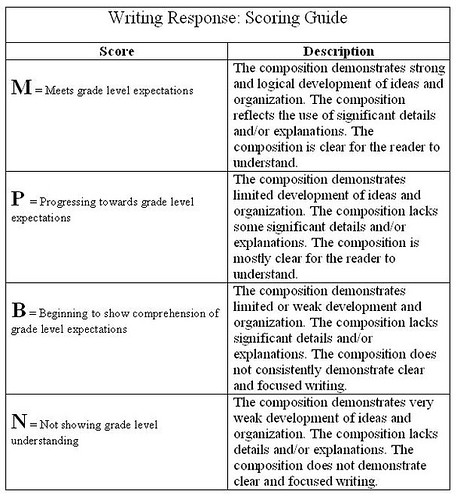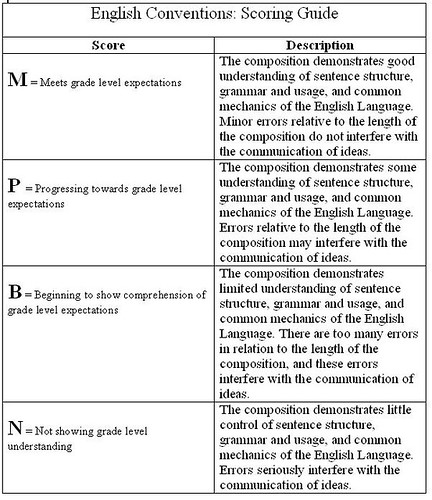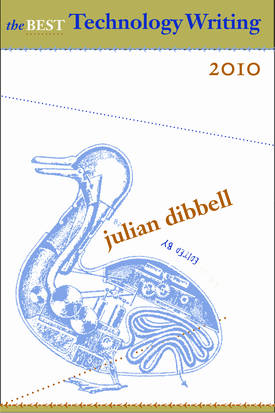

Our school is in the midst of a two year Literacy Initiative, which has led to such things as a Literacy Conference hosted at our school last year and a move into the Fountas & Pinnell Benchmark Assessment and many conversations about reading and writing and literacy (although not so much around New Literacies).
Last year, as we shifted into a Standard-based Reporting System (no more grades), I realized that I needed a reading response rubric that would align with that new system and allow me to have conversations about what we expect from our writers when they are responding to literature. The principal agreed to pay for enlarging the rubric into a huge poster for all of our sixth grade classrooms, and now that is a common tool we all use. Then, our associate superintendent walked through the room earlier this year, commented on the rubric, and asked that our principal provide copies for other schools and also for other classrooms.
Now, that reading response rubric hangs in most of the grades three through six classrooms in our school. I can’t say if it is helping or hindering other teachers, though. I am hopeful that it will lead to more exposure to open response, critical thinking questions. All of our test score data shows an across-the-board weakness in open response from our students, in math as well as ELA.
But what about writing? What about personal narratives, short stories and other forms of longer composition that does not fall under the heading of reading response?
Last week, we began the first steps towards creating a similar rubric for writing and composition for grades three through six. We made pretty decent headway, I think, but it is more difficult than it seems to create a document flexible enough to be useful for a third grader as well as a sixth graders, without being so general that it means nothing.
We decided to break off the ELA Conventions as its own rubric and then, with the Writing/Composition Rubric, we focused in on some specific areas:
- Clarity
- Explanations
- Details
- Development of ideas
- (to be added) rich vocabulary
One teacher had a great suggestion with this draft that a small group of us presented: create a third column on the rubric for grade-specific skills. This would allow for us all to have some common language around literacy, but still allow that flexibility for what is expected in each grade — building skills as the students move upward through the school.
We’ll also be reformatting these rubrics with more bullet points, as opposed to sentences, so that the rubric makes more sense visually for students. Eventually, each classroom will have three large rubric posters: reading response, writing/composition, and conventions.
Since I was given the charge of creating the draft of the rubric (which I am sharing here), I purposely used the word “composition” instead of writing in the rubric, and I explained to my colleagues that this word better covers all elements of literacy — use of digital tools to create work as well as composing an essay. I noted, too, that the Common Core standards are heavy on use of media for learning and creating and so I hoped that word “composition” would be flexible enough. No one argued that point.
Peace (in the rubric),
Kevin






